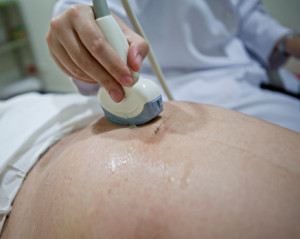More Could be Done to Prevent Stillbirths
 A recent article in the Washington Post chronicles the gut-wrenching heartache of delivering a stillborn baby, and questions why, in this modern day and age with advanced obstetrical care, stillbirths are still happening. Surprisingly, the statistics on stillbirth rates in the United States haven’t changed much in the past few decades. Every year, some 26,000 American babies die in utero, and 160 pregnancies end with a stillborn child.
A recent article in the Washington Post chronicles the gut-wrenching heartache of delivering a stillborn baby, and questions why, in this modern day and age with advanced obstetrical care, stillbirths are still happening. Surprisingly, the statistics on stillbirth rates in the United States haven’t changed much in the past few decades. Every year, some 26,000 American babies die in utero, and 160 pregnancies end with a stillborn child.
What is supposed to be a joyous, celebratory occasion — the birth of a new child — turns into a tumultuous and devastating event. The author’s own sister experienced this horrific tragedy, after her baby died in utero from supposed cord complications. After her lifeless niece was delivered, the attending doctor said the baby likely suffered an umbilical cord accident — something which claims the lives of thousands of babies each year in America.
Stillbirth risk factors may go unchecked
The Eunice Kennedy Shriver National Institute of Child Health and Human Development says that umbilical cord accidents kill more babies than other more known risks factors such as gestational diabetes or high blood pressure.
During routine prenatal exams, expectant mothers are generally tested for high blood pressure and elevated blood glucose levels, but doctors rarely look for potential umbilical cord problems. Why this obvious risk factor isn’t tested more regularly comes down to standards set by the American Congress of Obstetricians and Gynecologists, which doesn’t mandate the practice, and that most insurance carriers do not cover this test.
Another consideration is the fact that umbilical cord tests aren’t that reliable, and may actually contribute to false alarms. Dr. Rebecca Starck of the Cleveland Clinic says that some 30 percent of babies are delivered healthy and without complications despite having cords around their necks.
Known risk factors for stillbirths include smoking, being over 35, obesity, alcohol / drug use and race, as black women are twice more likely to have a stillborn child. Besides routine ultrasounds, the author suggests that more proactive measures could be taken to prevent the loss of a baby in utero. For example, more attention could be paid to the cord and placenta during ultrasounds, and non-stress tests could check the fetal heart rate for signs of abnormalities. The baby’s blood flow could be also be monitored with Doppler imaging.
Tools available to prevent these losses
“We have the tools to prevent a lot of these losses,” said Lindsey Wimmer who runs a nonprofit to research stillbirths after suffering one herself. “So much of it is not rocket science. It’s better monitoring and better identifying those pregnancies that are showing signs of risk, and managing them appropriately.”
Other mothers are using a new app called “Count the Kicks” that helps measure their babies’ movement during the last trimester. Studies have shown that drastic changes in the baby’s movement could be a symptom of fetal distress.
Every year in the U.S., juries award damages in fetal death cases, where doctor’s negligent actions were found to be the contributing factor. A stillbirth lawsuit arising from medical malpractice is one way that parents can seek justice and bring closure to an unbearably painful chapter in their lives.
- Washington Post, Stillbirth in the 21st century? It happens http://www.washingtonpost.com/news/parenting/wp/2015/02/10/stillbirth-seems-inconceivable-in-the-21st-century-but-it-still-happens/
- WebMD, Understanding Stillbirth http://www.webmd.com/baby/understanding-stillbirth-basics

 Resources
Resources
 Resources
Resources

